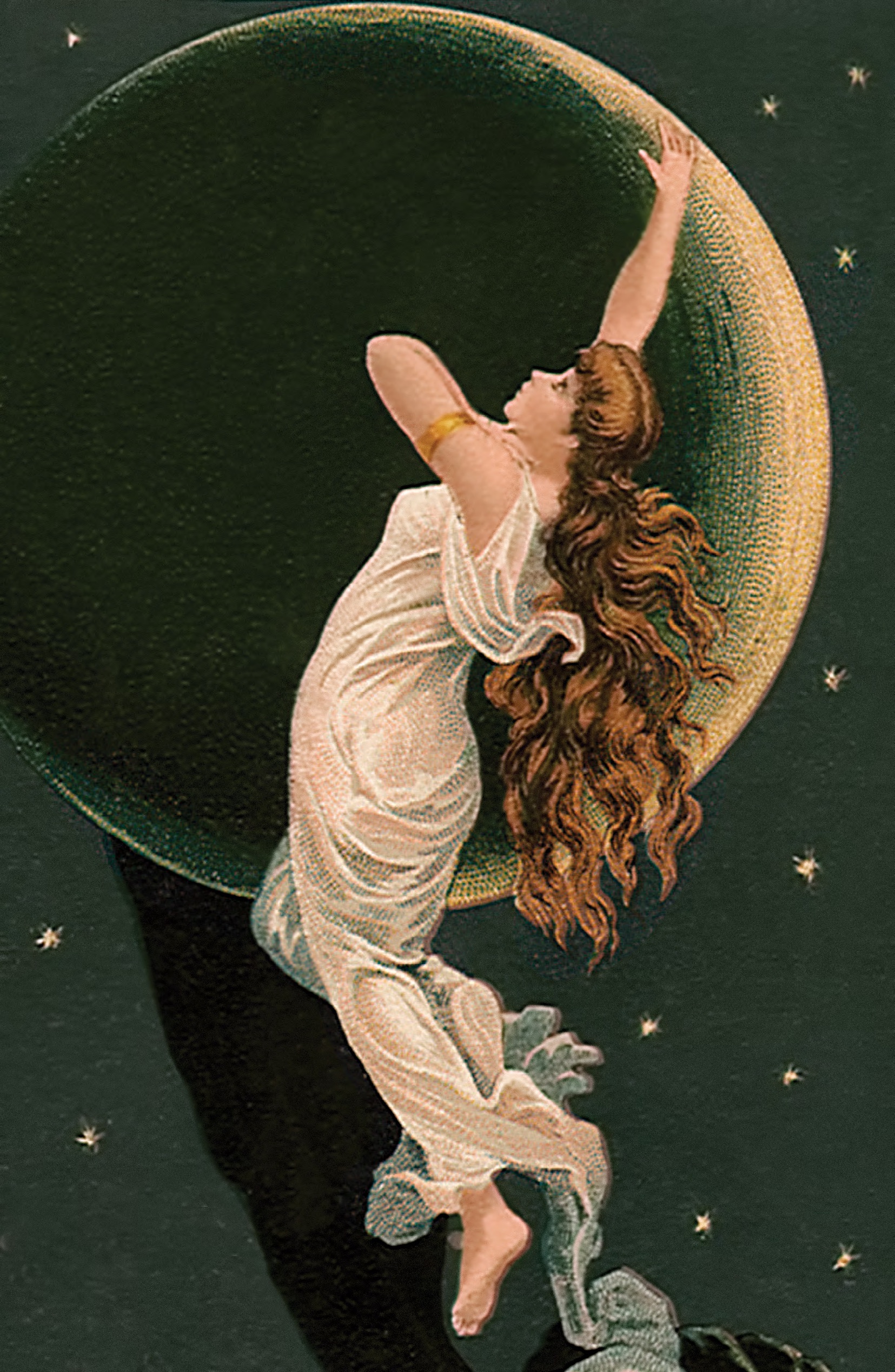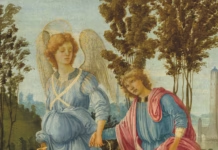Midnight is the fairy hour, and the edge of night is when their revels begin. But to the Victorian and Edwardian imagination, fairies not only danced by the light of the moon; they also sometimes danced upon it. The Victorian fairy expressed secret yearnings of the often prim and proper society, cavorting in open fields, wearing gowns made from dew-strewn cobwebs or sometimes not a stitch at all.
Mortals have always felt a certain longing when they stared at the moon from their wingless positions, pinned to earth. They have delighted at the opportunity to live vicariously through fairy art and stories, flying up to the heavens to dance among the stars. In Hans Christian Andersen’s “The Snow Queen” (1844), evil goblins fly up to the celestial heavens with a mirror that distorts everything to look wicked.
When they drop the mirror, it shatters into shards that scatter across the entire world. Fairy-tale artists such as Ida Rentoul Outhwaite wrote about moon fairies descending to earth carrying the drifting clouds behind them like a blanket. And in a lovely, brief 1929 poem by Jessie Pope, even moonbeams are personified as winged sprites: “We’re just like bubbles, / We cannot fall, / We have no troubles, / No cares at all. / Longfeather pipes us / A lively tune / As we skim round the horns / Of the crescent moon.” Myths of moon creatures and anthropomorphized night phenomena were so prevalent that in 1885, the Reverend Timothy Harley wrote an entire book about them, Moon Lore, with chapters such as “The Woman in the Moon” and “Lunar Fancies.”

There are many more examples of art, children’s poems and stories, and fairy tales from the late 1800s and early 1900s that explore the idea of earthly beings fluttering their wings all the way up to the stars and the moon, but there are also stories that feature fairy-like beings who come from the moon and stars. Perhaps the most influential was the 1902 film by Georges Méliès, A Trip to the Moon. In this beautifully whimsical film, a group of astronomers dressed as wizards decide to attempt a moon landing by shooting a bullet-shaped capsule out of a cannon. When they arrive on the moon, they discover a race of beings called the Selenites, insectoid beings that look quite like Unseelie fey. The astronomers escape and return, but they bring a Selenite captive with them—moon fairies on earth. This was an era when humans hadn’t the glimmer of an idea that space exploration might actually become reality instead of fantasy, so the idea of learning firsthand what life on the moon was like existed in the same realm as fairy tales and bedtime stories. Yet so much of what the Victorians and Edwardians thought was merely fantasy turned out to be possible, thanks to the dreams and creativity of humankind.
It makes one wonder: How much of what we now think is simply fairy story or fantasy might someday be proved to be reality as well? In the meantime, I’ll keep checking at night to catch a glimpse of a fairy.




































